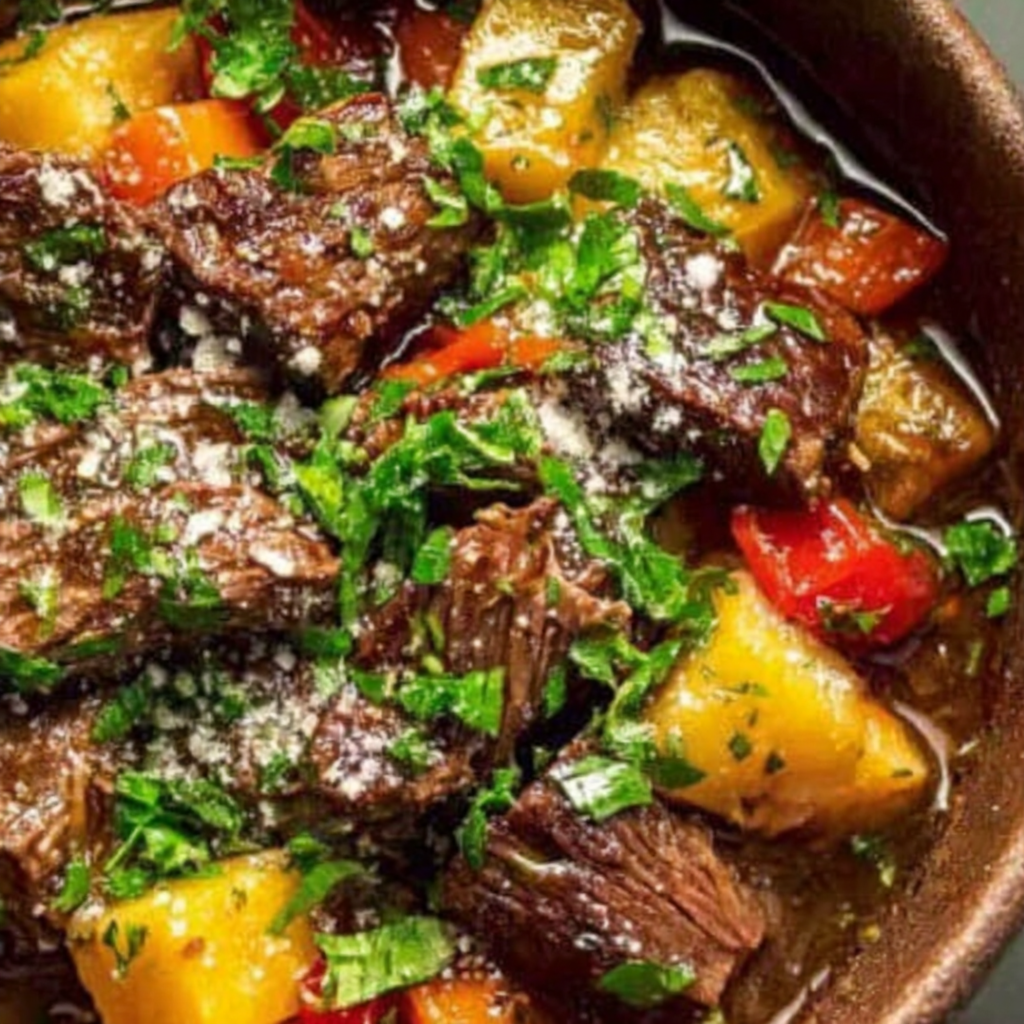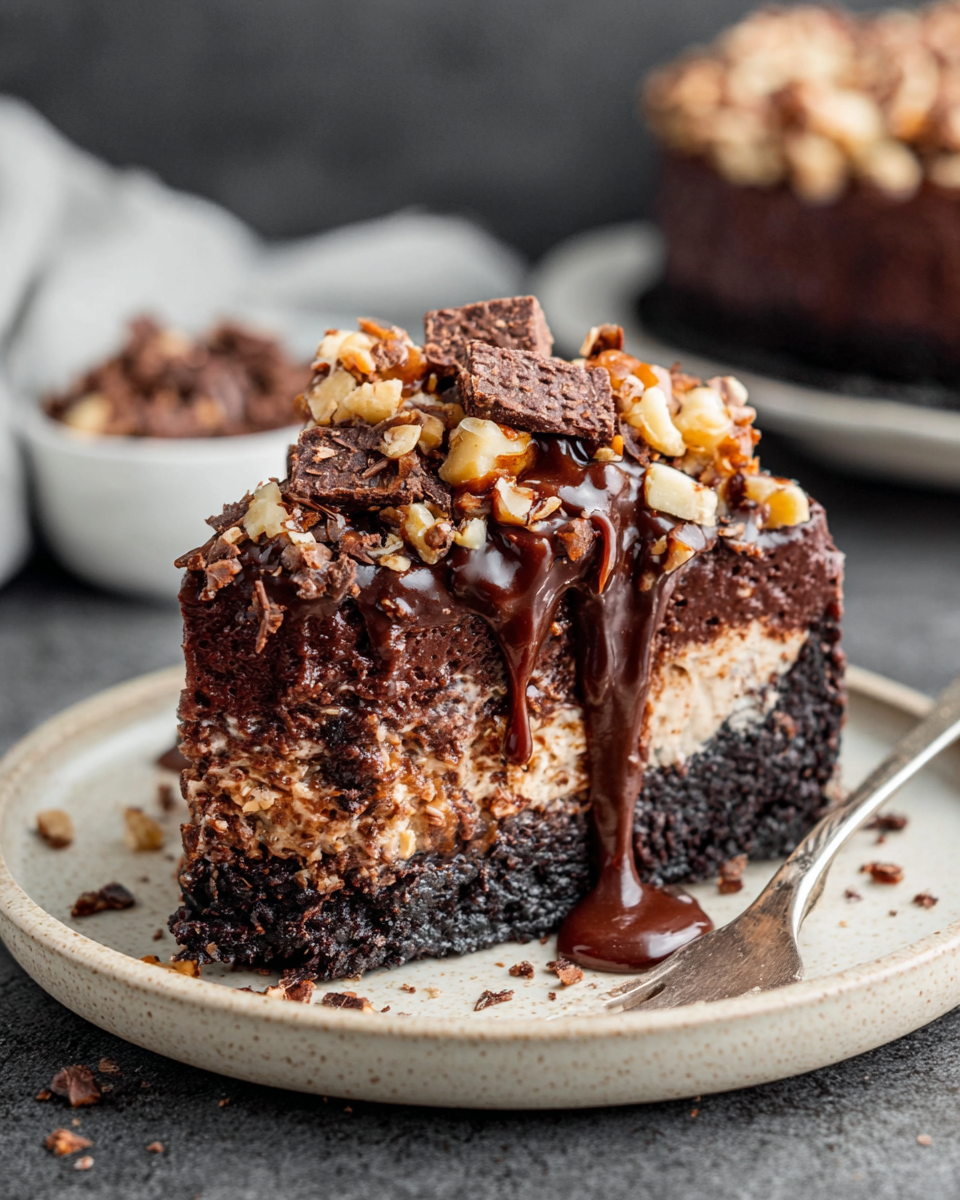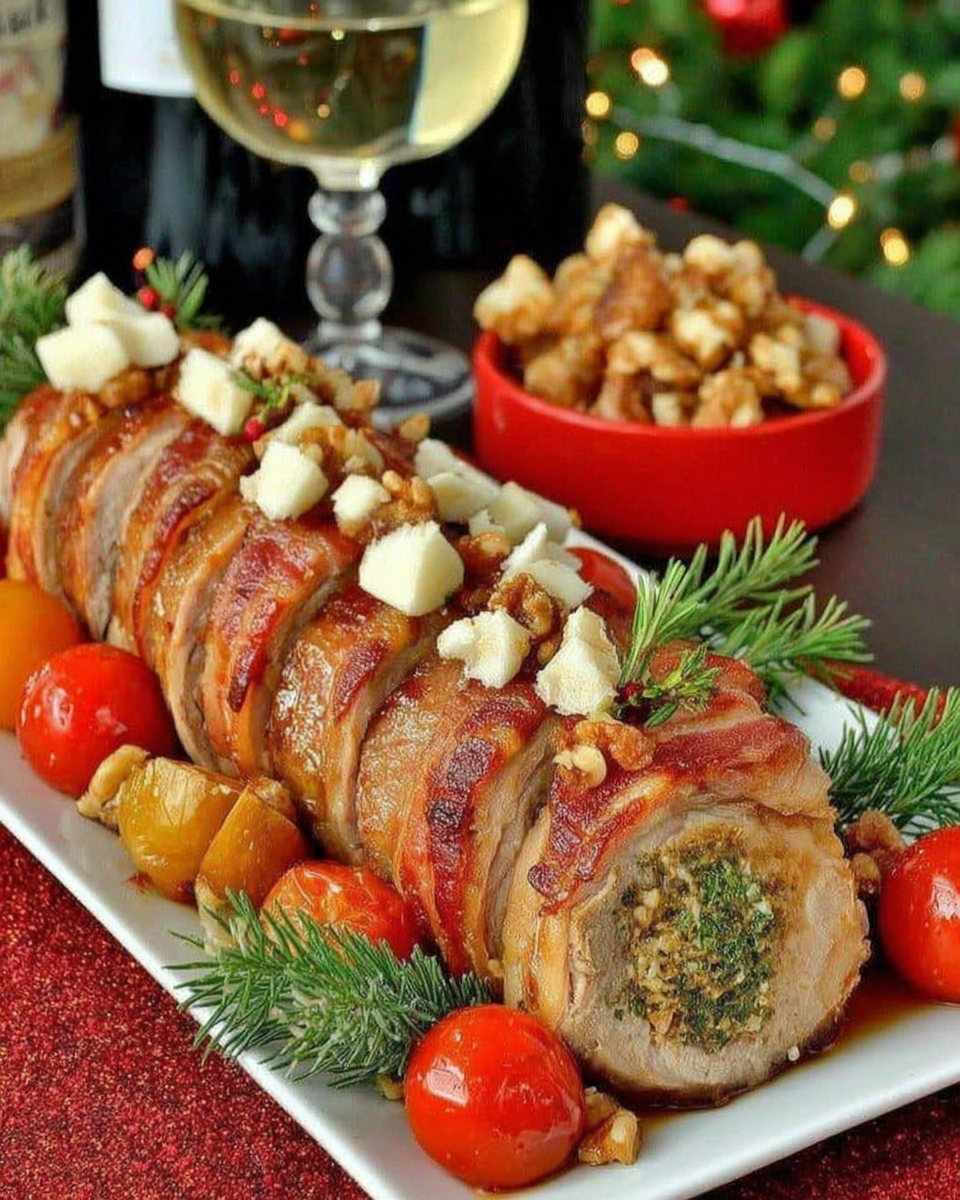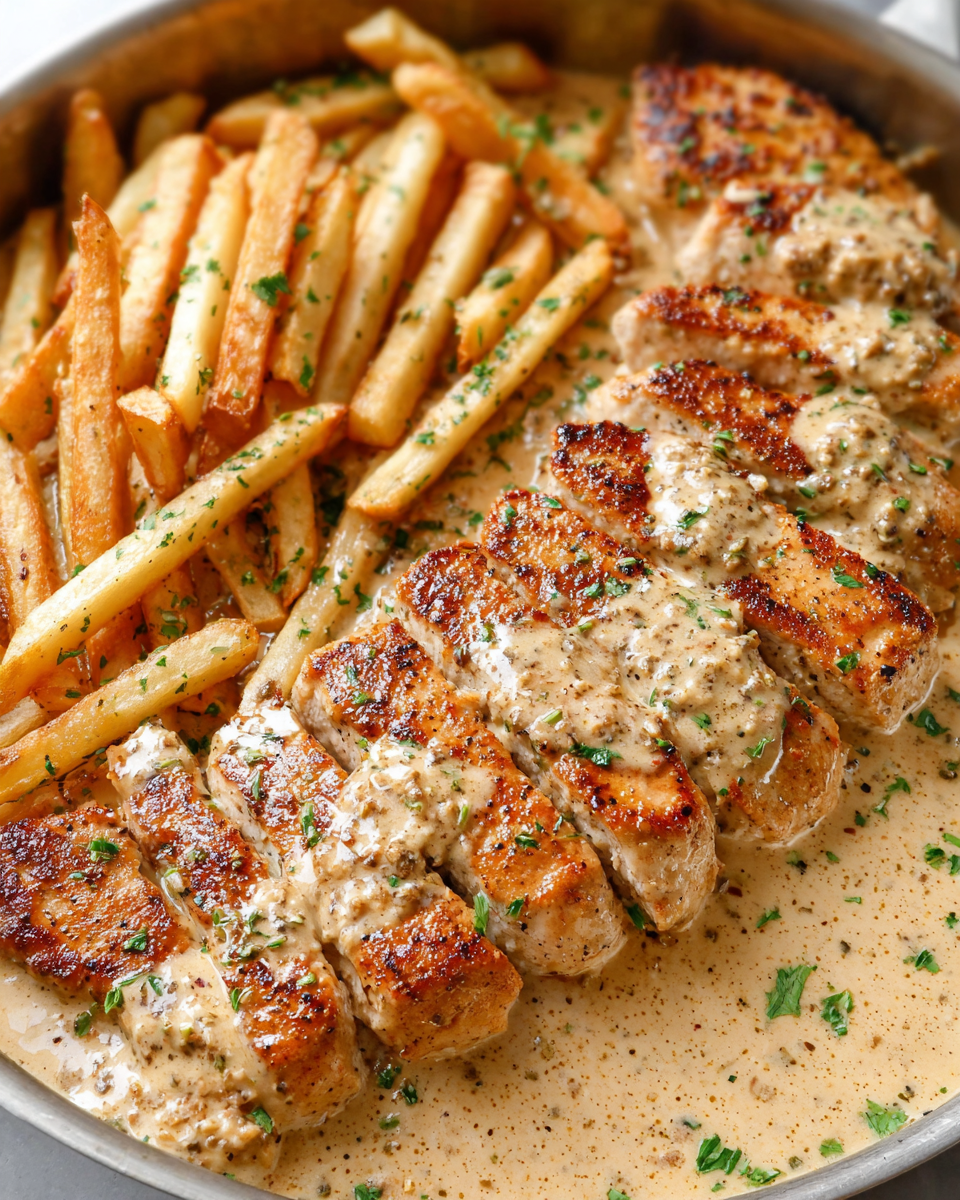Introduction
There’s something incredibly comforting about a slow-cooked meal that fills the home with inviting aromas. A well-prepared beef casserole provides not only nourishment but also warmth, making it a perfect dish for family gatherings or cozy nights in. Utilizing a slow cooker allows for flavors to meld beautifully, resulting in tender meat and rich sauces.
Slow cooking transforms tougher cuts of beef into succulent bites while enhancing the dish's overall flavor profile. The secret lies in the patience of the cooking process. The beef slowly absorbs the essence of herbs and vegetables, creating a hearty meal that's as satisfying to make as it is to enjoy.
Ingredients
- 2 pounds chuck roast
Chuck roast is ideal for slow cooking due to its marbling, which breaks down during cooking. This results in tender, juicy meat. - 1 large onion, chopped
Onions add depth and sweetness to the casserole as they cook down, enhancing the overall flavor. - 3 cloves garlic, minced
Garlic contributes a fragrant, savory element that complements the beef and balances the richness. - 4 carrots, sliced
Carrots provide natural sweetness and delightful texture, cooking to a tender consistency while adding color. - 3 potatoes, diced
Potatoes absorb flavors and become creamy in texture, making the casserole heartier and more filling. - 1 can (14 oz) diced tomatoes
Diced tomatoes create a base for the sauce, adding acidity and moisture that helps tenderize the beef. - 1 cup beef broth
Beef broth enhances the meaty flavor of the dish and keeps the mixture moist as it cooks. - 2 tablespoons Worcestershire sauce
Worcestershire sauce adds a tangy depth, packed with umami that enhances the overall taste of the casserole. - 1 teaspoon dried thyme
Thyme offers a subtle earthiness that complements the beef, providing a wonderful aroma and flavor. - Salt and pepper to taste
Seasoning is essential in elevating the flavors of all ingredients, ensuring a balanced and enjoyable dish.
Directions & Preparation
Step 1: Trim excess fat from the chuck roast and cut it into large chunks.
Trimming the fat prevents the dish from becoming greasy, while cutting the beef into chunks allows for even cooking and greater flavor absorption.
Step 2: Season the beef with salt and pepper.
Seasoning at this stage ensures that the beef develops a rich flavor from the very start of the cooking process, allowing it to penetrate deeply into the meat.
Step 3: Heat a skillet over medium-high heat and sear the beef chunks on all sides until browned.
Searing the beef creates a caramelized crust that greatly enhances the depth of flavor in the final casserole. This step is essential for building a rich base for the sauce.
Step 4: In the slow cooker, add the chopped onions, minced garlic, sliced carrots, and diced potatoes.
Layering the vegetables first helps them to cook properly. They soak up the beef juices and flavors added later, creating an aromatic foundation.
Step 5: Place the seared beef on top of the vegetables in the slow cooker.
Positioning the beef atop the vegetables allows the natural juices from the meat to drip down and flavor the vegetables, resulting in a cohesive taste experience.
Step 6: Pour in the diced tomatoes, beef broth, and Worcestershire sauce.
These ingredients create a savory liquid that tenderizes the beef while melding flavors. The acidity from the tomatoes also balances the richness of the beef.
Step 7: Sprinkle dried thyme over the mixture, and stir gently to combine.
The thyme's aromatic oils are released when combined with the other ingredients, heightening the dish's fragrance and adding a herbal note.
Step 8: Cover the slow cooker and set it to low for 8-10 hours.
Cooking on low allows the beef to become incredibly tender as it gradually breaks down, while also enabling flavors to develop deeply over the long cooking time.
Step 9: Check the dutch oven near the end of cooking and adjust seasoning if necessary.
Tasting towards the end of cooking allows you to balance flavors. If the seasoning is lacking, adjusting at this stage maximizes enjoyment.
Step 10: Once cooked, shred or cut the beef as desired and serve.
Shredding the beef integrates it with the sauce, providing each serving with a good mix of meat and vegetables that delivers a comforting and hearty dish.

Creating the Perfect Beef Base
Starting with a quality chuck roast is key to achieving that tender, melt-in-your-mouth texture. Searing the beef before adding it to the slow cooker not only enhances the meat’s flavor but also lays down a foundation of rich, caramelized notes that will permeate the dish over hours of slow cooking. It’s this initial step of browning that sets your casserole apart from others, ensuring every bite is packed with flavor.
Importance of Vegetables in Slow Cooking
Vegetables are not just fillers; they play a critical role in flavor development and texture in slow-cooked dishes. As they soften, they absorb the meat juices and contribute their own natural sweetness. Carrots, onions, and potatoes in this recipe not only provide a colorful contrast but also create a balanced and hearty harmony in the dish, making it wholesome and satisfying.
Serving Suggestions for a Hearty Meal
This slow-cooked beef casserole is a complete meal on its own, but pairing it with a crusty bread, a simple green salad, or even a side of steamed vegetables can elevate your dining experience. A crisp salad can cut through the richness of the casserole, while crusty bread offers a satisfying contrast to the tender beef. Consider a glass of red wine as well; it can enhance the meal’s flavors and add a touch of elegance.
FAQs
What should I do if my casserole is too thick?
If the casserole ends up thicker than desired, simply add a bit more beef broth or water during the cooking process to reach your preferred consistency.
Can I use a different cut of beef for this casserole?
Yes, while chuck roast is optimal, you can use cuts like brisket or round for a different texture, although they may require slight cooking adjustments.
What happens if I overcook the beef?
If you overcook the beef, it might become too dry or stringy. Make sure to adhere to the cooking time recommendations and check for tenderness.
Can I add more vegetables to this casserole?
Absolutely! Feel free to incorporate other vegetables like peas, green beans, or mushrooms for added flavor and nutrition.
Will fresh herbs work instead of dried thyme?
Yes, fresh herbs can be used! Just double the amount as fresh herbs are less concentrated than dried.
How do I enhance the flavor if it turns out bland?
If the casserole lacks flavor, consider adding a splash of Worcestershire sauce or a pinch of salt to boost the umami experience.
Conclusion
Slow-cooked beef casserole is more than just a meal; it's a heartwarming experience that can bring friends and family together. Each bite offers a delightful balance of flavor and texture, making it a cherished addition to any dinner table.
With a few simple steps, you can create a comforting dish that speaks to the heart. Whether it’s a chilly evening or a busy weeknight, this casserole provides a nourishing solution, allowing you to enjoy home-cooked goodness with minimal fuss.
Recipe Card
Notes
Additional serving suggestions: pair with a crisp salad, garlic bread, or roasted seasonal vegetables for balance.
For make-ahead, prep components separately and assemble just before heating to preserve texture.
Taste and adjust with acid (lemon/vinegar) and salt right at the end to wake up flavors.







